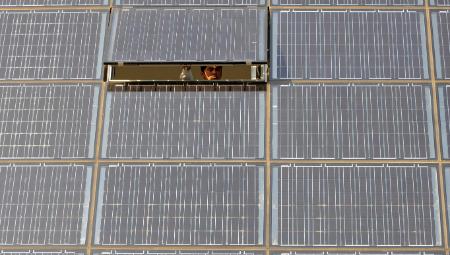|
Investment strategies almost never consider external costs to the environment when calculating potential returns. But incorporating environmental risk and sustainability into investor mindsets is possible– and urgent.
Every day we hear more about the threats to our planet: catastrophic climate change, vanishing species, growing mountains of waste, and worsening divides between rich and poor. There is growing awareness that our global economy is environmentally unsustainable. Our prosperity depends on a wide range of resources and services supplied by our planet: land to feed ourselves, water to drink, minerals for our industries, and the humble bee to pollinate our crops.
Most of these resources and environmental services are overexploited and underpriced. Often, they are not valued at all in today’s economies.
Meanwhile, the economy is not delivering quality of life for a huge section of the world’s population: more than a billion people are undernourished, lack clean water and live without electricity. The global population is expected to grow rapidly in the next 30 years, from 6.9 billion in 2010 to 8.8 billion in 2040, mostly in developing countries. This growth will place even greater pressure on natural resources.
Climate change compounds these problems, changing patterns of rainfall and agriculture, increasing the frequency and severity of extreme weather events, and threatening to displace millions of people. We need to halve global carbon dioxide emissions by 2050 if we are to avoid the worst impacts, but this will require a radical restructuring of our economy away from dependence on oil and gas.
Why is the economic and financial system failing us? In spite of these increasingly clear signals, today’s capital markets are not currently allocating capital in a way that promotes a sustainable economy. Investors rarely incorporate sustainable development issues into their valuation work, or into the messages that they transmit to the people who run the companies for them. There are many reasons for this, but three stand out.
First, short-termism–for which the capital markets can be fairly criticised. Second, investors don’t always have the knowledge and tools needed to ensure that their decisions are consistent with long-term sustainability objectives. And, third, there is political failure. This essentially boils down to global governments and policymakers failing to make sustainable development and environmental externalities count in corporate finances.
The difference between short-termism and political shortcomings is that the former is a failure by shareholders to provide correct incentives, while the latter is a failure by governments to ensure that companies pay the full cost of their social and environmental externalities.
If the current system is failing humankind–and the planet– what is the alternative? What might a sustainable economy actually look like? And how do you turn sustainability risks into opportunities?
Ultimately, an economy is a means to an end, where the end is the enhanced well-being of human societies that avoids undue pressure on the environment. Continued, but sustainable, economic growth must be ultra-low-carbon, which will require radical efficiency improvements in how we use all our resources.
This will mean major changes in how we invest today. By investing wisely and using our power to shape the development of capital markets, we, as investors, can help create resilient, stable and sustainable economies.

What does this mean in practice? Forum for the Future worked with Aviva Investors and the UK government’s Technology Strategy Board to calculate the parameters for a genuinely sustainable future economy. This “Sustainable Economy Framework” defines the characteristics of a sustainable economy: one that operates within safe environmental limits and enriches people’s lives.
Our framework captures a comprehensive range of environmental boundaries and social conditions that a sustainable economy must respect. It can be applied to any sector or business, and investors can use it as a pragmatic guide to analyse the long-term sustainability of their investments.
Using the principles of sustainability to guide investment makes hard-headed business sense. For example, we have a solid foundation in science, which tells us that continuing to burn the fossil fuels that exacerbate climate change will profoundly disrupt economic activity. The fl oods and extreme weather events which we have seen over recent years serve as a warning of things to come.
Some will argue that the goal of a sustainable economy in 2040 is unrealistic. Undoubtedly, this is a massive challenge. But what is striking is that, in principle, it is possible to achieve this. It is also clear that the way fi nancial markets operate over the next 30 years will be one of the most important enablers of, or barriers to, achieving that goal.
Investors can play a big part in achieving what we see as the ultimate goal of a resilient, sustainable economy that maximises quality of life for all, so that people can develop their full potential and lead productive, creative lives without sacrifi cing the environment.
References and recommended sources
www.forumforthefuture.org
OECD work on green growth and sustainable development
OECD Forum 2013 Issues
More OECD Observer articles on environment
Subscribe to the OECD Observer including the OECD Yearbook
|
|

Jonathon Porritt, Founder Director, Forum for the Future and

Peter Madden, Chief Executive, Forum for the Future
©OECD Yearbook 2013

|





